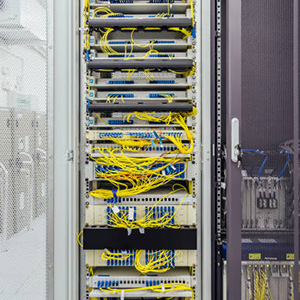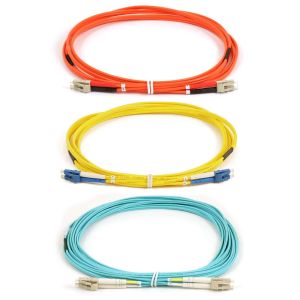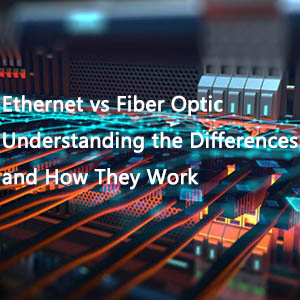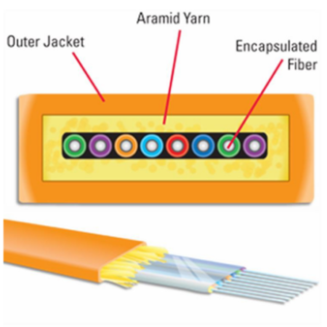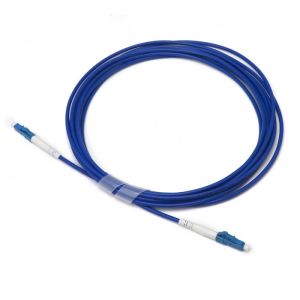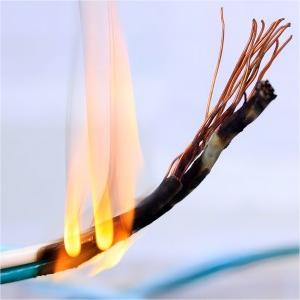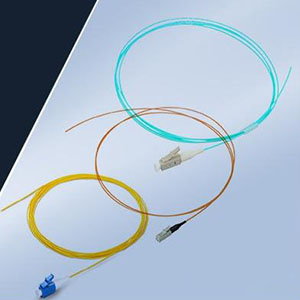Fiber optic pigtails, often referred to as the workhorses of the bare fiber world, are optical cables that flaunt connectors on one end and a bare, unconnected end on the other. This unique design is the key to seamless integration with a variety of optical devices, ensuring signals traverse with minimal loss and optimal performance.
What Is a Fiber Optic Pigtail?
A fiber optic pigtail is the chameleon of the optical cable world. It’s a cable with a twist—terminated with a connector on one side and left bare on the other. This design allows the connected side to interface directly with equipment like fiber converters or optical transceiver modules, while the unconnected side is ready to be spliced with optical fibers, creating a bespoke connection tailored to your needs. Think of it as the fiber optic patch cord‘s more adventurous sibling, ready for a splice and a new life.
The Anatomy of Fiber Optic Pigtails
Fiber optic pigtails are designed with versatility and performance in mind, meeting or surpassing all current and future application demands. They come in a variety of optical connector types, single-mode and multimode fibers, and cable structures to suit any requirement.
Diversity in Connectors
The fiber optic pigtail family is as diverse as it is useful, with members like SC, FC, LC, ST, MU, E2000, and MTRJ. Each type brings its own set of advantages to the table, from the cost-effective precision of LC connectors to the robustness of FC’s metallic body and the compact efficiency of MU connectors.
LC fiber optic pigtails
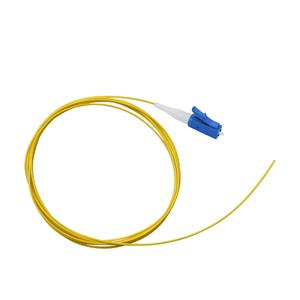
LC fiber optic pigtails are the stars of the single-mode application sky, offering a blend of affordability and precision with their 1.25mm ceramic ferrules. They’re the go-to choice for dense installations, where space is a premium.
SC fiber optic pigtails
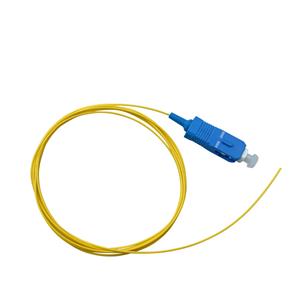
SC fiber optic pigtails are the unsung heroes of cable installations, with their non-optical disconnect connectors and lightweight design. They’re the Swiss Army knife of the fiber optic world, ready for action in CATV, LAN, WAN, and test and measurement scenarios.
ST fiber optic pigtails
ST fiber optic pigtails are the veterans of multimode fiber optic LAN applications, with their long-lasting 2.5mm ferrules. They’re the backbone of telecommunications, industry, medical, and sensor fields.
FC fiber optic pigtails
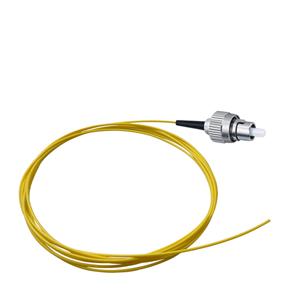
FC fiber optic pigtails are the steady companions in general and average applications, with their metallic body and screw-type structure. They’re the reliable friend you can always count on.
MU fiber optic pigtails
MU fiber optic pigtails are the mini SC connectors, half the size but full of potential. They’re popular in Japan and are making waves in high-speed data communications and dense wavelength division multiplexing (DWDM).
MT-RJ fiber optic pigtails
MT-RJ fiber optic pigtails are the dynamic duos designed for fast Ethernet, with their mini ribbon fiber inside. They’re the small form connectors that make a big impact in density applications.
E2000 fiber optic pigtails
E2000 fiber optic pigtails are the guardians of the fiber world, with their spring-loaded shutters that protect the ferrule from dust and scratches. They’re the innovators with a wide range of applications, ready for any challenge.
Single-mode and Multimode Marvels
Just like their patch cord cousins, fiber optic pigtails come in both multimode and single-mode varieties. Multimode pigtails use 62.5/125 micron or 50/125 micron bulk multimode fiber cables, while 10G multimode cables (OM3 or OM4) don the aqua jacket, ready for action.
Conclusion: The Future-Proof Link
Fiber optic pigtails are the future-proof links in your optical network, ready to be fusion spliced onto pre-terminated assemblies or field-terminated cables. They come in a variety of jacket materials, from PVC/LSZH to armored and waterproof options, ensuring they’re ready for any environment. With a wide range of types, from 9/125 single-mode to 10G 50/125µm OM3, and fiber counts from simplex to 48 fibers, these pigtails are fully compliant with Telcordia, EIA/TIA, and IEC standards. If you’re ready to enhance your network with these versatile links, reach out to us with your requirements.

